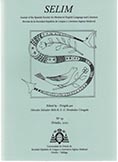Abstract
Abstract: The fi gure of the pilgrim has been considered one of the leitmotifs of vernacular insular literature. In the Roman de Horn, Boeve de Haumtone, and their Middle English translations, King Horn and the Auchinleck Bevis, the heroes repeatedly exchange clothes with pilgrims, since the “esclavine” and the “bourdon” grant them complete immunity to encroach on their enemies’ territory and test the loyalty of their lovers. However, the pilgrim disguise may prove useful in yet another way, providing the poets with a convenient fi gure in which to mirror their own role as storytellers. The purpose of this paper is to examine to what extent the authors of these romances make use of the fi gure of the pilgrim in order to foreground their authorial role and draw attention to their own poetic activity.
Keywords: Anglo-Norman romance, Middle English romance, translation, pilgrim, disguise.




